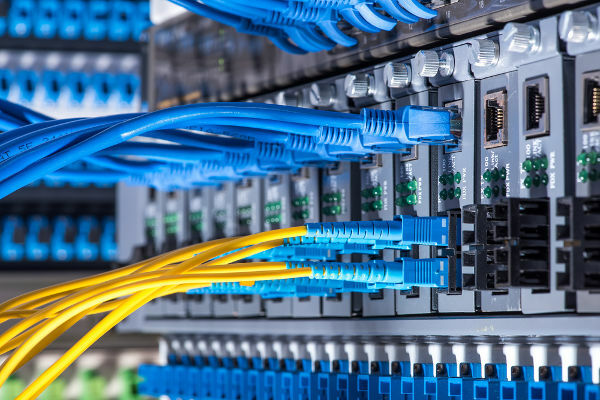At optical fibers are flexible filaments capable of transmitting light from a light emitter to a detector sensitive to it. These filaments are generally constructed of transparent materials and have a thickness close to a strand of hair.
Studies related to optical fibers began in 1842, with the analysis of light transport in water jets made by Jean-Daniel Colladon and Jacques Babinet. With the invention of the laser in the 1960s, the research and development of optical fibers was enhanced.
In 1966, Charles Kao and his team managed to transmit data through fibers made from silica, and these transmissions took place without significant data loss.
Applications for optical fibers
In addition to being used in telecommunications and data transport, optical fibers can be used in transmissions of phonecalls and on TV signals.

Optical fiber is widely used in telecommunications.
Another possibility of using this material is imaging diagnosis, performed, for example, in the endoscopy exam. In this exam, a special optical fiber is introduced, along with a light source,
in the stomach, providing images that are used to detect the state of the organ..
A special optical fiber is used to perform endoscopy exams.
Different types of signals can be transmitted through the fibers, over long distances, without loss of quality. An example of this is that transoceanic cables provide signal transmissions between continents.
Do not stop now... There's more after the advertising ;)
How does light travel through optical fiber?
Light is transmitted through the fiber through the phenomenon of full light reflection. When light falls on the separation surface between two media with different refraction indices, in the direction of the largest to the smallest index, with angles of incidence greater than a specific angle called critical angle, a refraction is impeded and the light ray is fully reflected.

The fiber optic core has a higher refractive index than the shell, so when light is incident, always with a angle greater than the critical angle, it undergoes successive total reflections, which makes it walk the entire length of the material.
Disadvantages
As much as optical fibers have numerous advantages when compared to cable copper, there are at least two disadvantages in using these materials:
1. Fibers are manufactured with very sensitive materials, therefore, their handling during manufacture and during installation must be carried out in order to guarantee the integrity of the material;
2. Long-distance transmissions can only be carried out with the introduction of signal amplifiers, usually installed at a minimum range of 50 km. Because they are made of a very specific material, manufacturing amplifiers increases the cost of producing very long fiber optic cables.
By Joab Silas
Graduated in Physics
Would you like to reference this text in a school or academic work? Look:
JUNIOR, Joab Silas da Silva. "What are optical fibers?"; Brazil School. Available in: https://brasilescola.uol.com.br/o-que-e/fisica/o-que-sao-fibras-opticas.htm. Accessed on June 28, 2021.


